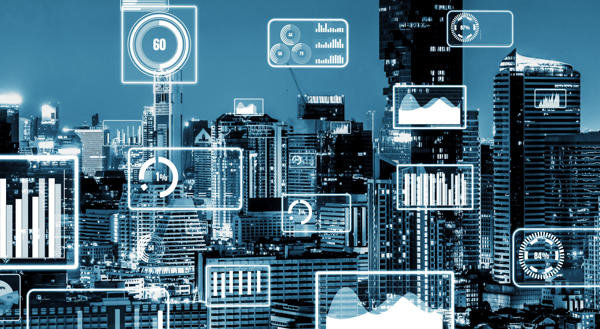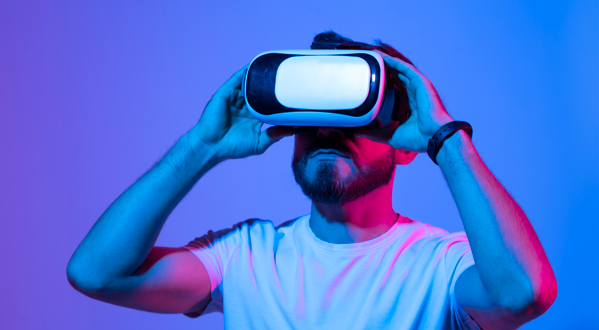Virtual transformation – the progressive adoption of immersive technologies at every level of the enterprise, from marketing/sales to support processes, is just around the corner. Like any technological innovation, pioneers who know how to ride the wave can gain a new competitive advantage. According to a recent study by PwC (CEO Panel Survey), virtual transformation is the second concern for CEOs. In this article, we will share our vision of the transition from today’s Internet to the Internet of the future: the Metaverse.
The Metaverse is already here
Currently, apart from the high-profile announcements by Facebook, which has even changed its name to Meta to clarify its new positioning as a Metaverse Company, several companies and celebrities are already embracing this new three-dimensional, and immersive digital paradigm.
#1 – The collaboration between Louis Vuitton and gaming giant Riot has given birth to the first partnership between couture and video games: a skin created for the famous game champion Qiyana, followed by a line of clothing and accessories to be worn in the physical world, not just in virtual mode.

#2 – Even Dolce & Gabbana has begun to experiment in this world with the NFT Genesi collection, which reached a valuation of over $6 million.

#3 – As early as 2019, Nike took its first steps into the virtual world by filing the CryptoKicks patent: a token that associates a digital identity with Nike shoes, ensuring their authenticity through blockchain. In recent weeks, according to the United States Patent and Trademark Office, Nike has filed trademarks for Nike, the slogan “Just Do It,” the Swoosh logo, and Nike+, indicating its intention to produce and sell virtual shoes and clothing under the Nike brand. Subsequently, two additional applications were filed for the “Air Jordan” and “Jumpman” logos.

#4 – On the Roblox platform, a user paid $4,115 for a Gucci bag (virtual, of course). Also on Roblox, Vans World is a project/example of a company venturing into the metaverse, creating its virtual world to connect with its community of enthusiasts. It offers an interactive experience where players can skateboard in various parks while wearing virtual outfits by Vans.

#5 – American rapper Snoop Dogg will enter The Sandbox by purchasing virtual land parcels, which he will use to build a representation of his mansion and create limited-edition 3D avatars as non-fungible tokens. The rapper’s latest venture is the creation of the Snoop Dogg Private Party Pass, an exclusive ticket that grants access to concerts, events, and NFT collectibles.
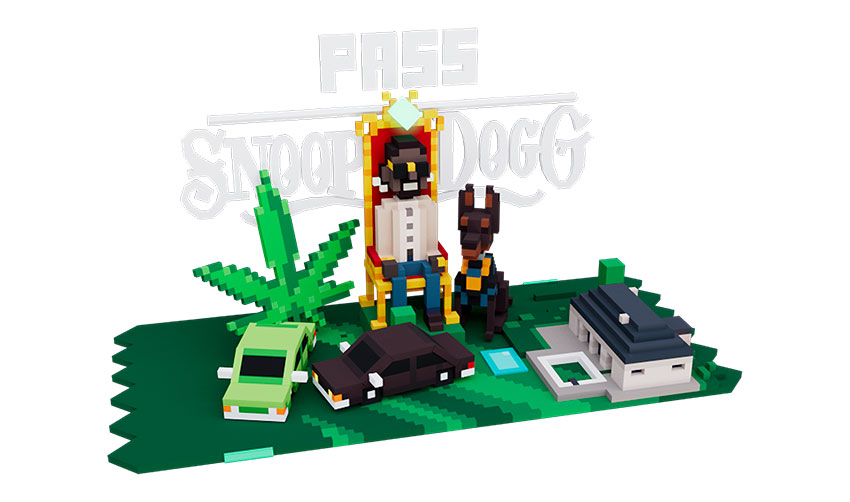
#6 – Gué Pequeno has released his album “MR. FINI – The Experience” using augmented reality. Developed for Island Records/Universal Music Italy, the app takes the user inside the hotel room featured on the album cover, providing a fun and interactive way to discover exclusive content and previews from the artist’s new work.
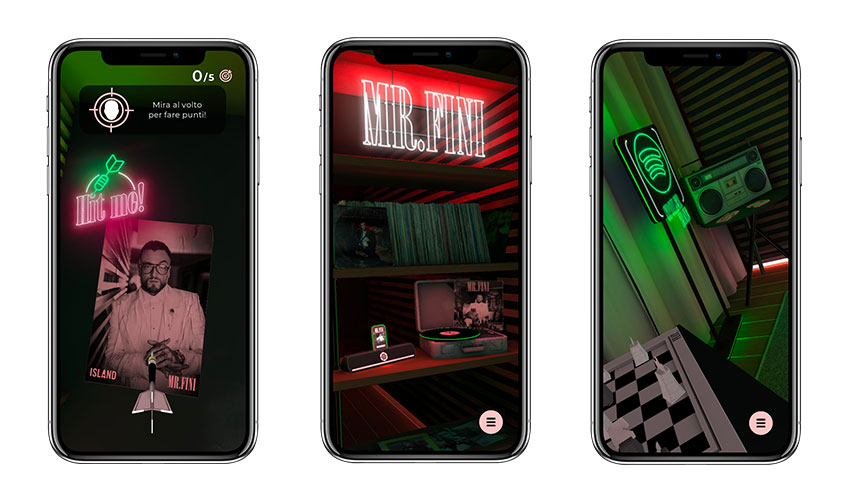
From digital transformation to virtual transformation
Digital transformation has allowed for the dematerialization of “paper” and the migration of content and processes to the digital realm. However, technology has advanced in the meantime.
On one hand, three-dimensional computer graphics, faster graphics processors, and new immersive first-person visualization technologies (AR/VR), driven by the world of digital entertainment, have taken the concept of digitalization to the extreme, enabling real-time reproduction and interaction with three-dimensional information. On the other hand, computers have gradually moved beyond their traditional boundaries (a more or less cumbersome device) to enter physical space, thanks to emerging technologies such as IoT, robotics, the cloud, and others.
Thus begins the era of virtualization, where information escapes into space, and space enters into information. Even the internet will evolve from two-dimensional hyperlinks enriched with multimedia content to persistent 3D virtual spaces connected within a perceived virtual universe called the metaverse.
A true virtual transformation is underway, a process through which immersive and simulative technologies will be used to revolutionize how we interface with physical reality (augmented by a layer of data) and with the digital/virtual world. This revolution encompasses how we interact with customers, employees, and various stakeholders.
THE KEY INTERFACES OF VIRTUAL TRANSFORMATION
The future internet will be three-dimensional, as will a significant part of human social interaction, entertainment, and business activities. Augmented reality and virtual reality represent the ideal, natural, and ultimate interfaces for accessing virtual three-dimensional experiences. That’s why analysts, such as Ark Invest, often include them in the concept of virtual worlds and the metaverse.
However, they will not be the only interfaces, nor will they be exhaustive. Today, it is already possible to enjoy numerous three-dimensional experiences through desktop or mobile screens, and these are just a preview of the more deeply immersive experiences that the metaverse and wearable devices will provide in the coming years. The advantage of AR and VR lies in their greater immersiveness, which enhances the sense of presence and involves our senses and brains more deeply, making the experiences significantly more rewarding.
VIRTUAL TRANSFORMATION AS A SHIFT TOWARD THE VIRTUAL ECONOMY
If we will interact with digital products in physical space, it is easy to imagine that the metaverse will bring about a new economy – the virtual economy – that is dematerialized and fast. Paradoxically, physical products may become secondary, at least in the purchasing process, while completely virtual products will emerge.
In the first case, think about the possibility of “test-driving” a new car in an immersive mode, simulating the driving experience realistically, and then ordering it to be delivered to your doorstep.
In the second case, consider Non-Fungible Tokens (NFTs), unique and indivisible digital assets residing on the blockchain. They can represent one-of-a-kind digital copies of real-world artworks, such as a Banksy piece, or unique copies of “native digital” works, which are digital art created specifically to be sold as NFTs. Examples include the works of Beeple or Fabio Gianpietro’s VR artwork, even including an Oculus headset, called “Hyperplanes of Simultaneity.”
And if art doesn’t interest you, you could explore real estate: thanks to blockchain and NFTs, companies like MetaverseProperty buy and sell virtual lands and properties, construct houses and offices, and even manage virtual real estate properties.
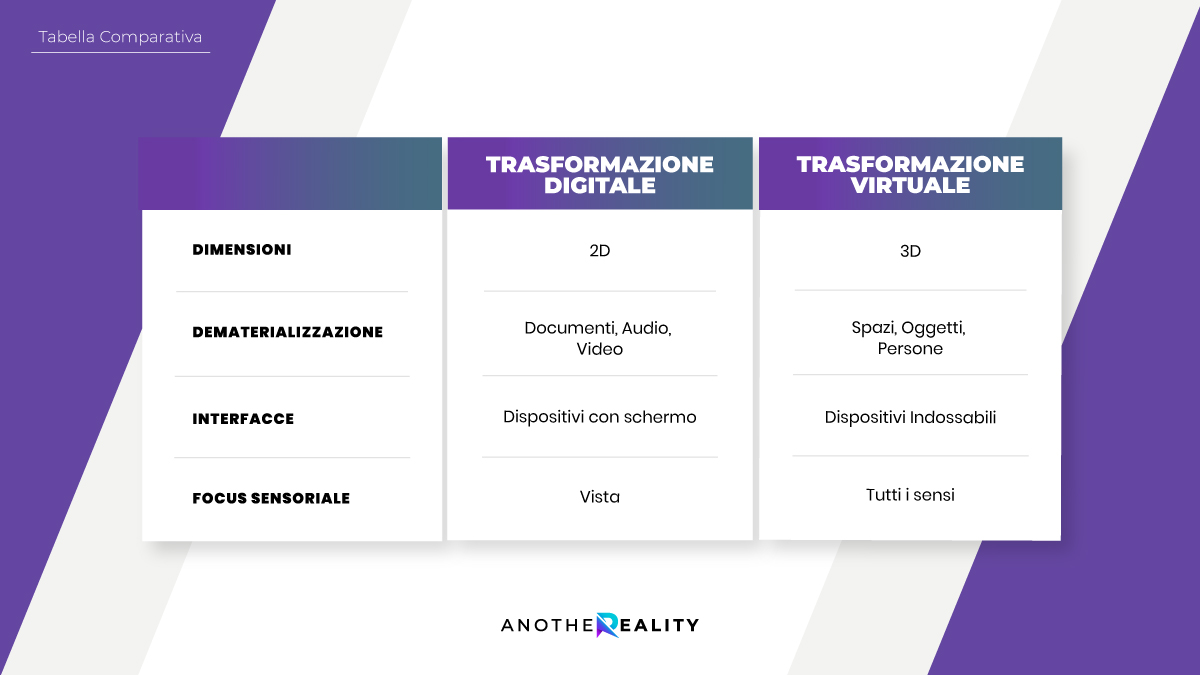
WHY COMPANIES SHOULD TAKE THE FIRST STEPS IN VIRTUAL TRANSFORMATION
Companies will also have to reckon with the metaverse. Among the first to do so are marketing and communication professionals, as it represents a frontier of online interaction that has already gained significant traction among consumers, as we have seen, thanks to video games.
Just as social media revolutionized the landscape of online marketing, the metaverse will do the same. Although we don’t have a shared standard at the moment, it’s only a matter of time. “Virtual-try-before-buy” experiences are already technologically feasible (e.g., Nissan), and they could be the first frontier for experimenting with next-generation product showcasing.

The newness of digital twins is already a game-changer at the industrial level, where spatial computing has been present for several years thanks to Industry 4.0 technologies, with immersive technologies representing the most natural interface. However, in the coming years, virtual offices and virtual worlds for business will also become increasingly prominent, allowing people to meet through their avatars and collaborate using specific immersive tools.
Today, these new digital ecosystems, born from the upcoming virtual transformation, represent ideal tools for a hybrid approach to workplaces. They allow us to enjoy the benefits of remote work in terms of productivity and motivation without experiencing its limitations. How long will it be until we naturally view the virtual headquarters as a new point of aggregation for employees, clients, and suppliers? The transition is imminent, as the technologies are already available.
Barriers to virtual transformation
In addition to the cultural and learning barriers that are inherent to any technological innovation, there are two additional barriers to consider.
#1 — Maturity of spatial devices/peripherals. Metaverse software has evolved over 30 years of video games, encompassing tools for creating environments, design logic, and game engines. In fact, in the early 2000s, Second Life, a 3D multiplayer virtual world, made it seem like the widespread adoption of virtual worlds was just around the corner. However, Second Life lacked complete immersion, which only wearable devices, specifically virtual reality, could provide. It can be inferred, by observing the investments made by big tech companies, that the gap between the evolution of hardware for virtual worlds (rapidly evolving) and software (already matured through investments in the gaming field) will soon converge.
#2 — Availability of creation platforms. Even when immersive reality devices become commonplace, there is a need to bridge the second gap: the availability of platforms that allow the creation of content for virtual worlds. We can think of it as the WordPress of virtual worlds. A Virtual CMS that enables the creation of showcases, stores, spaces, events, and meeting and business places. This is an area we are also working on.
Advantages of virtual transformation
The advantages of virtual transformation are unequivocal.
#1 — Innovative experiences. Marketers will have the opportunity to create completely new customer experiences and leverage them as a significant competitive advantage. This ranges from awareness stages (e.g., immersive advertising) and engagement (e.g., lead generation campaigns) to product display (e.g., immersive product experience) and scenarios of virtual shopping and virtual post-sales services.
#2 — Hybridization of physical and virtual spaces. The boundaries between the physical and digital realms will disappear, and the two dimensions will converge in the metaverse, leveraging the advantages of both. This includes the ability to interact in physical spaces and the content management agility typical of digital spaces. Simulation, prediction, and engaging interfaces in these hybrid environments will become the norm.
#3 — Inclusiveness. Consider e-sports: even people with disabilities will be able to participate. They will also have access to VR concerts and sporting events. Immersive technologies will break down many barriers inherent in the physical world.
#4 — Sustainability. Events, in particular, will undergo significant innovation thanks to immersive technologies. It will no longer be strictly necessary to travel to Seattle for a technology summit. Therefore, immersive technologies could contribute to the decarbonization of an entire industry.
In conclusion, following the initial footsteps of video games, events are now evolving towards hybrid models, and stores, offices, and places for socialization will follow suit to form the metaverse.
It is essential for all brands, without exception, to become aware of this transformation, analyze the opportunities, and prepare to leverage immersive technologies to gain a competitive advantage and do things differently, tapping into previously untapped potential. In the meantime

